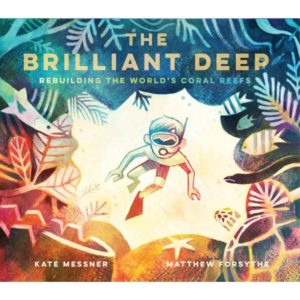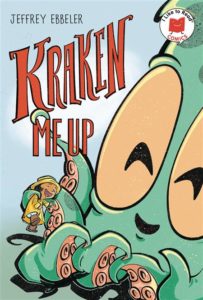Bicycling with Butterflies by Sara Dykman
Full disclosure: I chose to review this book because author Sara Dykman is visiting the library. Better yet, you’re invited! Join us at the library on Tuesday, September 27th for Dykman’s presentation about her new book, Bicycling with Butterflies, which, plainly stated, recounts “[her] 10,201-mile journey following the monarch migration.”
Seriously, she rode 10,000+ miles on a bicycle from Mexico to Canada and back to travel with the beautiful, threatened monarchs. Further interesting is that she’s headed back to Mexico, though on motorcycle this time, stopping here in Joplin (among other places) along the way, to again follow the monarch butterflies to Canada and back.
Sara Dykman works in amphibian research, is an outdoor educator, and, as a handful of her trips illustrate, an adventurer. She’s walked from Mexico to Canada, canoed the Missouri River from source to sea, and cycled over 80,000 miles across North and South America. She founded beyondabook.org, “an adventure-linked education project that connects real-time adventures to classrooms [that creates] opportunities for real-life learning [that] inspires students to push their limits and explore the planet.” Through her adventures and projects, Dykman hopes “to empower young and old to dream big.”
Dykman begins by sharing how her idea of cycling the monarch migration came about. Like most ideas, it started as a seed that sprouted into something much larger and full of life. A simple desire to visit the butterflies at their overwintering grounds (in Mexico) morphed into a full-fledged plan to accompany them on their migration, via bicycle. But she didn’t just hop on a bike and go. She spent a year planning, researching, and otherwise preparing for the adventure. As she wrote in the first pages of her book, “Eventually, there was nothing left to do but start.” And start she did.
Like the monarchs, Dykman’s journey began and ended in El Rosario, Mexico. She arrived there in January 2017, though she (and the butterflies) did not head north until March. A wonderful map illustrates the basics of their route. March, April, and May took them up north through Mexico, Texas, Oklahoma, Kansas, Missouri, Iowa, and Minnesota. June carried them farther north, then eastward across Michigan and Canada, reentering the United States on the east coast in July. Late July through August took them westward then south, crossing New York, Michigan, Indiana, Ohio, then down into Kentucky. September swept them westward across Illinois and Missouri, then started them on their homestretch south. October and November took them farther south, through Arkansas, Oklahoma, Texas, and Mexico, back to their starting point in El Rosario.
Dykman’s upcoming visit will not be her first stop in Joplin. She stopped here, as did some of the monarch butterflies, in October 2017, on her way back south to the starting point. She pedaled into Joplin under cover of night and stayed over at local master naturalist Val Frankoski’s house. Like Dykman, Val cares deeply for the monarchs and has worked tirelessly, alongside others in our community, to plant milkweed and otherwise provide a habitat for and raise awareness about the monarchs and their migration, as well as their importance. This work, along with Dykman’s visit, culminated in a mayoral pledge, which declared April through October 2017 as the Mayors’ Monarch Pledge Days in Joplin (http://joplinmo.org/1001/
While here, Dykman presented to 1,000 enthusiastic school children, as she describes in her book: “Val saw me hopeful, telling kids about the joy of monarchs, adventure, and science, and how everyone can be a part of the solution.” After Joplin, Dykman pedaled off to nearby Neosho, Missouri, before heading farther south. She wrote that she “left Joplin just as [she] had arrived, in the cover of night.”
Now, about the book’s arrangement and layout (which is one of my favorite things to include in reviews, as I think it’s important, particularly in nonfiction). As one might expect, this book is organized chronologically, recounting Dykman’s journey starting in January 2017 through November of that same year. Each chapter begins with the number of days it is during the migration, as well as the dates and the miles covered. For example: Days 142-153 / July 31-August 11, Miles 5518-6005. For this particular stretch, that’s about 40 miles a day, which, to my surprise, takes cyclists about 4 hours to complete (according to Google, that is). Still, that’s a lot of mileage, especially day after day after day.
Bicycling with Butterflies is as much a 10,000+ mile memoir as it is an account of the monarchs’ migration. In addition to recounting the actions and observations of, as well as her interactions with, the butterflies, Dykman describes her exchanges with those she meets along the way, some more positive and inspiring than others. I like that she doesn’t hold back, that she doesn’t weed out the less-than positive aspects of the narrative. Moreover, I appreciate her social commentary.
I recommend this book to anyone with an interest in adventure stories, the environment (specifically, saving it), the monarch butterflies, and memoir. A word on Dykman’s writing: excellent. She has a keen eye for drawing parallels between us and the world in which we live. If you’re not able to join us for her upcoming author visit, then I encourage you to check out her book–literally!
As always, happy reading.




